Huayna Picchu (also “Wayna Picchu”) is the steep peak behind Machu Picchu that you see in the classic postcard view. The hike is short but intense, with narrow stone steps, a few airy sections, and huge rewards at the summit. As of today, access to Huayna Picchu is via Circuit 3 → Route 3‑A (Huayna Picchu Mountain) with two entry groups—07:00 and 09:00—and a strictly limited daily quota.
This guide shows you exactly how to book on the official ticket site, what the trail is really like, how long it takes, and whether you should choose Huayna Picchu, Machu Picchu Mountain, or Huchuy Picchu. We keep this page verified against the latest government circuit and capacity rules so you can plan with confidence.
Entrance Ticket for Huayna Picchu: Circuit 3 & Schedules
Circuit 3 is divided into four routes, and Huayna Picchu is Route 3-A. It highlights the most sacred and important areas once used by Inca royalty—such as the Temple of the Sun, the Inca House, and the Temple of the Condor. This circuit requires little physical effort. If you choose to hike the mountains (Huayna Picchu or Huchuy Picchu) or visit the Great Cavern, you’ll need more time and a higher level of effort.
- Route 3-A: Huayna Picchu Mountain
- Route 3-B: Royalty-Designed Route
- Route 3-C: Great Cavern Route (only available in high season)
- Route 3-D: Huchuy Picchu Route (only available in high season)
Circuit 3-A (Huayna Picchu)
Every day, 350 people hike this mountain (this number changes over time/season), divided into 2 shifts (7:00 a.m. and 9:00 a.m.), and tickets sell out quickly. For this reason, you need to book tickets far in advance. Each ticket costs 200 soles.
This ticket also allows you to access Machu Picchu, touring it through Circuit 3 before you hike the mountain. Circuit 3 passes by the lower part of the Inca citadel, showing you interesting areas like:
- Central Square (13)
- Temple of the Sun
- Twelve Windows/Doce Vanos (9)
- The Sacred Rock (8)
- The warehouses (10)
- Water Mirrors (11)
- Temple of the Condor (12)
Circuit 3 allows you to explore the central area of Machu Picchu, where the most important and exclusive sites are located, such as the Temple of the Sun, the king's palace, and the ceremonial water fountains.
Take note
Huayna Picchu Mountain tickets allow entry through the lower part of Machu Picchu (Circuit 3) and don't provide access to the upper part (Circuit 1), where you can take classic photos, nor to the classic route (Circuit 2), where you can visit the most popular areas of the citadel.
Remember, re-entry isn't permitted with these mountain tickets—much less switching from one circuit to another in the middle of a visit or backtracking. Park rangers are very alert to these violations.
If you want to explore the entire site and snap pictures from the upper part (Circuit 1), you'll need to buy a separate, regular Machu Picchu ticket for 152 soles.
Entry times to Huayna Picchu
Huayna Picchu has two entry groups: 07:00 and 09:00. The hike itself takes about 2–3 hours round trip, including short breaks and time to enjoy the views from the summit.
If you’re visiting Machu Picchu and hiking Huayna Picchu on the same day, plan for 6–7 hours in total. This includes the bus ride and lines, the walk along Circuit 3 to the checkpoint, the ascent and descent, and the one-way exit from the citadel.
| First Shift - 07:00 a.m. | Second Shift - 09:00 a.m. |
This ticket allows you to access the Machu Picchu citadel from 7:00 a.m. to 7:30 a.m. and, while touring it through Circuit 3, access Huayna Picchu from 8:00 a.m. to 9:00 a.m. It takes around 45 minutes to 1 hour to get to the Huayna Picchu entrance from the main gate, exploring through Circuit 3. Then the hike to Huayna Picchu takes approximately 1 hour up and a similar time to get down; however, with stops it might take around 3 hours, then another 45 minutes to exit Machu Picchu. | This ticket allows you to access the Machu Picchu main gate at 9:00 a.m. until 9:30 a.m. Then you will need to hike through Circuit 3 and enter the Huayna Picchu gate from 10:00 a.m. to 11:00 a.m. Hiking Huayna Picchu in the second shift is often the best option, since there is a higher probability of good weather and clear views. However, you need to consider your return train times and the long bus queues to return from Machu Picchu. |
Recommended for:
| Recommended for:
|
Huayna Picchu tickets Price
You can purchase Huayna Picchu Mountain tickets on the official website, at authorized ticket points in Cusco, or through us. See our options for Machu Picchu tickets and tours. Prices are shown in Peruvian soles, the local currency.
Foreigner | Peruvian | CAN citizenship** | Cusco people | |
| Adults (18+) | S/ 200 | S/ 112 | S/ 112 | S/ 112 |
| Children (3 - 17 years old) | S/ 118 | S/ 80 | S/ 80 | S/ 80 |
| Students (Up to 25 years old)*** | S/ 125 | S/ 80 | S/ 80 | S/ 80 |
*Children under 3 years old have free admission.
**Citizens of Bolivia, Colombia, and Ecuador. Member countries of the Andean Community of Nations (CAN)
***Foreign undergraduate and CAN students: up to 25 years old with an original, valid university ID showing the institution name, your full name, photo, and an expiration date within one year of your visit.
****Cusco people have free admission only on Sundays, subject to capacity availability.
How to book Huayna Picchu Mountain tickets
To buy your Machu Picchu ticket with Circuit 3-A (Huayna Picchu access), go to the official ticket site of Peru’s Ministry of Culture: tuboleto.cultura.pe.
Sign In
- Click “Iniciar sesión” (Log in) and then “Regístrate” (Register).
- Select your nationality (nacionalidad), choose your ID type, Passport/DNI/Foreigner Card (Tipo de Documento), enter the number, and click “Validar documento” (Validate document)
- Enter your first and last names (Nombres/Primer Apellido/Segundo Apellido)
- Enter your email and phone with country code (Celular). Click “Enviar código” (Send code), paste the code into “Código de seguridad” (Security code), and click “Validar código” (Validate code).
- Create and confirm your password (contraseña).
- Accept the terms and policies (terminos y condiciones).
- Click “Crear cuenta” (Create account). Then sign in to purchase.
Buy your tickets
- Click “Llaqta Machupicchu” → “Agenda tu visita” (Schedule your visit).
- In “Adquiere tu boleto” (Get your ticket), choose Circuito 3 – Machupicchu Realeza → Route 3-A: Huayna Picchu Mountain. Select your date, entry time (07:00 or 09:00), origin (Foreigner/Peruvian/Resident/CAN), number of visitors, and click “Agregar al carrito” (Add to cart).
- Review the summary and click “Continuar” (continue).
- Enter traveler data exactly as in the passport. Add companions if needed, click “Guardar” (save), accept terms, and “Continuar” (Continue)
- Note your reservation code and click “Pagar reserva” (Pay for reservation)
- Choose domestic or foreign card, then enter your details and pay.
- Your tickets will arrive by email.
Best Time to Hike the Huayna Picchu Mountain
The best time to visit this imposing mountain is during the dry season (May to September), when skies are clearer and the stone steps are drier. Keep in mind this is also the busiest time of year, so plan ahead and book well in advance. The shoulder months can be great too—see notes below.
- Dry Season (May to September): Peak season with the most reliable weather. Mornings are cool and afternoons warm; dress in layers and bring a light jacket or sweater.
- Rainy Season (October to April): Expect frequent showers and higher humidity. Trails can be muddy and slippery, but the landscape is lush. Pack a waterproof jacket, rain pants, and wear shoes with good grip.
- Shoulder Months (April, October–early November): A balanced option—fewer crowds than peak months with a mix of sun and passing showers. Build a little flexibility into your day.
- 07:00 vs 09:00 entry: The 07:00 group is cooler and quieter but can be foggy. The 09:00 group often enjoys clearer views as the mist lifts; allow extra time to walk Circuit 3 to the checkpoint.
- Crowds & holidays: Weekdays are usually calmer than weekends and local holidays (June–August is the busiest). Book tickets and trains early in those periods.
- Altitude & sun: Huayna Picchu reaches ~2,693 m. UV is strong even on cloudy days—use sunscreen, hat, and stay hydrated.
| See this full guide to Weather in Peru
Additional info
Mountain weather changes fast. Fog and mist are common and can reduce visibility, especially at dawn; conditions often improve by mid‑morning. Check the forecast the night before and go prepared for sun, wind, and rain in the same day.
Tip: For the 07:00 group, staying in Aguas Calientes the night before helps you beat the early bus queues. For the 09:00 group, you’ll have more time to reach the Huayna Picchu checkpoint and often better visibility.
The Huayna Picchu hiking experience
If you’re up for a heart‑pounding adventure, Huayna Picchu should be at the top of your list. The trail is steep and narrow but very doable with care. Most hikers complete the round trip in about 2–3 hours. You’ll enter via Circuit 3 (one‑way flow, no re‑entry to other circuits) and finish back at the lower exit of the citadel.
- Enter Machu Picchu and follow the signed Circuit 3 through the lower sector to the Huayna Picchu checkpoint on the north side (allow 45–60 min from the main gate).
- Climb steadily for 45–60 min on stone steps and tight switchbacks. Use the handrails and take your time—three points of contact help on the steeper parts.
- At the summit, enjoy sweeping 360° views over the citadel, the Urubamba River, and surrounding peaks—perfect for wide‑angle photos.
- Descend the same way to the checkpoint (about 45–60 min) and continue the one‑way Circuit 3 to the exit (another 30–45 min).
The stairs of death
This nickname refers to several steep, narrow staircases carved in stone. They look dramatic—but with patience they’re safe. Expect tall steps, short handrails in key spots, and some airy sections where you may use your hands for balance. Don’t rush, don’t overtake on blind corners, and let uphill hikers pass first.
The views
On clear days you’ll see Machu Picchu from above, the serpentine Urubamba River, Putucusi, and forest‑covered ridges. Morning fog often lifts by mid‑morning—great for the 09:00 group. Bring a wide‑angle lens or use your phone’s panorama mode; drones are not allowed in the sanctuary.
The Challenge
The hike is moderately difficult with sustained stairs, narrow ledges, and exposure in places. Expect altitude around 2,693 m (8,835 ft) at the top and roughly ~260 m / 850 ft of elevation gain from the citadel. If you have strong vertigo, consider Machu Picchu Mountain or Huchuy Picchu instead.
Time restrictions
You must start within your assigned window (typically 08:00–09:00 for the 07:00 entry and 10:00–11:00 for the 09:00 entry). Arrive at the checkpoint early—there’s no tolerance for late starts. Allow 45–60 min from the main gate to reach the checkpoint via Circuit 3.
Safety precautions
Wear shoes with good grip, pack water (keep your hands free), sun protection, and a light rain layer year‑round. Move carefully on wet stone, use the handrails, and take breaks when needed. Bathrooms are only outside the main gate; food and drones are not allowed. Poles are generally restricted—if permitted, use rubber tips and be mindful on the stonework.
What to wear for Huayna Picchu
- Grippy hiking shoes (closed‑toe, rubber soles): your #1 safety item for wet stone steps and narrow ledges.
- Wool or synthetic hiking socks: wick sweat and help prevent blisters (avoid cotton).
- Quick‑dry layers: a breathable base layer + light mid‑layer; mornings are cool, midday warms up.
- Packable waterproof jacket or poncho: showers and mist are common year‑round.
- Sun protection: wide‑brim hat or cap, UV sunglasses, and SPF 50+ sunscreen (plus SPF lip balm).
- Insect repellent: DEET or picaridin for the cloud‑forest sections.
- Light gloves (optional): useful on chilly mornings and for gripping handrails.
- Neck buff or lightweight scarf: doubles for sun, wind, or mist.
- Small daypack (≤ 40 × 35 × 20 cm) with rain cover: Machu Picchu restrictions.
- Water (1–1.5 L per person) + electrolytes: no vendors inside the sanctuary.
- Phone/camera with wrist strap + power bank: drones and bulky tripods are not allowed.
- Waterproof pouch/zip bag: protect your phone, passport, and ticket from rain and sweat.
- Coins for bathrooms at the gate: facilities are outside only—go before you enter.
- Mini first‑aid: blister plasters, small tape, basic meds if needed.
- Avoid: sandals, heavy jeans, large backpacks, trekking poles (generally restricted), and loose straps that can snag on stairs.
Huayna Picchu Location and Altitude
Huayna Picchu rises directly behind the Inca city of Machu Picchu in the Cusco Region, Urubamba Province of Peru—about 80 km (50 miles) northwest of Cusco. The peak sits inside the Historic Sanctuary of Machu Picchu, within the Vilcabamba mountain range and the upper Amazon cloud‑forest zone.
The citadel terraces lie around 2,430 m (7,970 ft) above sea level, while Huayna Picchu reaches 2,693 m (8,835 ft). That means an altitude gain of roughly 260 m (850 ft) from the site to the summit. Below, the Urubamba (Willkamayu) River bends around the mountains in a deep canyon, part of what the Incas called the Sacred Valley.
- Closest town: Aguas Calientes (Machu Picchu Pueblo), ~2,040 m (6,693 ft).
- Access: Bus from Aguas Calientes to the main gate (≈ 25–30 min), then walk part of Circuit 3 to the Huayna Picchu checkpoint (allow 45–60 min).
- Orientation: Huayna Picchu stands to the north of the citadel; Machu Picchu Mountain is to the south.
- Climate: Subtropical cloud forest, mornings can be misty; expect strong UV and quick weather changes year‑round.
History of Huayna Picchu Mountain
Machu Picchu was built around 1450 by the Inca emperor Pachacuti as a royal estate or retreat. The citadel sits on a narrow ridge above the Sacred Valley in the heart of the Andes. Huayna Picchu rises directly behind Machu Picchu and forms the iconic backdrop seen in the classic postcard view.
The exact purpose of Huayna Picchu remains unclear, but the Incas integrated the mountain into the wider sanctuary with care. They built terraces, stairways, and small ritual spaces that blend with the natural rock. On the north face lies what is known today as the “Temple of the Moon” (or Great Cavern), finely worked masonry set inside a natural cave, suggesting ceremonial use connected to the rest of Machu Picchu.
For the Incas, Huayna Picchu likely served as both a huaca (sacred place) and a high lookout to observe weather, guard approaches, and mark time in the ritual calendar.
For local communities today, Huayna Picchu is considered an apu, a protective mountain spirit in the Andean worldview. Many Andean families honor the apus and Pachamama (Mother Earth) with quiet offerings and words of gratitude. Inside the protected sanctuary, activities are regulated, so any gestures of respect must be simple, discreet, and leave no trace.
Today, Huayna Picchu remains a symbol of Cusco’s heritage and a highlight of the Historic Sanctuary of Machu Picchu (UNESCO). Hiking it responsibly, staying on the marked path, following one‑way circuits, and respecting park rules, helps protect both the archaeology and the living traditions that make this place unique.
What does Huayna Picchu mean?
In Quechua, the language of the Incas, Huayna Picchu literally means “young mountain.” It stands opposite Machu Picchu, the “old mountain”, so the names form a meaningful pair. This old/young duality reflects a classic Andean idea of complementary balance in nature and society.
Linguistically, you’ll see different spellings: Waynapicchu, Wayna Picchu, and Huayna Picchu. The “hu” simply represents the Quechua “w” sound in Spanish‑style writing; all versions refer to the same peak you see behind the citadel in the postcard view.
For the Incas, mountains were not just scenery, they were huacas (sacred places) and apus (protective mountain spirits). Huayna Picchu’s name and position mattered: it watches over the city from the north, and its slopes hold stairways, terraces, lookouts, and small ceremonial spaces that tie the peak into the wider sacred landscape of Machu Picchu.
Rules for visiting Huayna Picchu
- Minimum age: Recommended generally for visitors 12+ years. Minors must be accompanied by an adult. Policies can change—always verify when booking.
- ID & ticket: Carry your original passport/ID. The name must match your Huayna Picchu ticket.
- Be on time: Respect your assigned entry window (07:00 or 09:00 groups). Allow 45–60 min from the main gate along Circuit 3 to the checkpoint. Late arrivals may be denied entry.
- One‑way flow: Follow Circuit 3 and stay on marked paths. There is no re‑entry once you exit Machu Picchu.
- Checkpoint control: Check in and out at the Huayna Picchu control point; follow ranger instructions at all times.
- Backpack size: Max 40 × 35 × 20 cm. Larger bags must be stored at the entrance lockers (small fee).
- Prohibited/restricted items: Drones, tripods/selfie sticks (often restricted), metal‑tipped poles, alcohol, smoking/vaping, loudspeakers, and glass containers. Keep gear compact and hands free on stairs.
- Protect the archaeology: Do not touch, sit, lean on, or climb walls and terraces. Keep a safe distance and mind your backpack in narrow areas.
- Leave no trace: No littering or feeding wildlife. Pack out all trash and dispose of it properly outside the site.
- Facilities: Bathrooms are only outside the main gate. Use them before entering; carry small coins.
- Footwear & clothing: Wear shoes with good grip; bring water, sun protection, and a light rain layer. Trails can be slippery after rain or morning mist.
- Trail etiquette: Give way on narrow stairs (uphill has priority), keep voices low, and avoid blocking passages for photos.
- Time on the mountain: The ascent and descent typically take 2–3 hours round trip, plus 30–45 min to exit the citadel.
- Great Cavern / Temple of the Moon: Access runs via Route 3‑C when available (often seasonal). Plan ~3.5–4 hours total. It is not a detour from the summit route—follow only the signed path.
- Sacred place, local respect: Huayna Picchu is considered an apu (protective mountain). Be discreet and respectful; leave no offerings or markers.
Great Cavern (Temple of the Moon)
Often called the Temple of the Moon, the Great Cavern is a ceremonial complex set inside a natural cave on the far side of Huayna Picchu. Here the Incas blended fine masonry with living rock, terraces, niches, and stairways, creating a sanctuary that feels both engineered and natural. The name “Temple of the Moon” is a modern nickname; what’s clear is its ritual character and its connection to the wider sacred landscape of Machu Picchu.
Why it matters
In Andean thought, caves (mach’ay) link the human world with the inner realm (ukhu pacha). Many specialists interpret the Great Cavern as a place for offerings and ancestor veneration, aligned with nearby huacas and the apus (protective mountain spirits). For local communities today, Huayna Picchu remains an apu; visitors are asked to show quiet respect and always follow sanctuary rules.
How to visit (route & ticket)
Access is via Circuit 3 → Route 3‑C: Gran Caverna when available. This is a separate route from the Huayna Picchu summit path (Route 3‑A) and is not a detour from the top, routes are one‑way and you can’t switch once inside. The Great Cavern is open from June 1 to October 15. Access is available only during the high tourist season, which coincides with the dry season in the Andes. The cost is 200 soles.
Time & difficulty
Plan roughly 3.5–4 hours total from the main gate: walk Circuit 3 to the control point, descend to the cavern, then climb back to rejoin the exit. Expect steep stairs, humid rock, and some exposed sections. It’s more demanding than the standard summit route and best for fit hikers comfortable with heights.
- Start early: Morning entries offer cooler temperatures and steadier footing.
- Footwear & hands free: Good grip shoes; keep one hand free for rails and rock.
- No facilities: Bathrooms are only outside the main gate—go before you enter.
- Photography: Be discreet; no drones, avoid touching masonry, and don’t block narrow passages.
- Weather & closures: The route may close for maintenance or heavy rain. If conditions look unsafe, rangers can suspend access.
Good to know
If you want to experience both Huayna Picchu summit (3‑A) and the Great Cavern (3‑C), plan separate entries/tickets on different visits. Choosing the right route at purchase is essential, once you’re inside, route changes aren’t allowed.
Huayna Picchu vs Machu Picchu Mountain vs Huchuy Picchu: Which one to choose?
Huayna Picchu | Machu Picchu Mountain | Huchuy Picchu | |
| Location | North of the citadel; iconic steep peak. | Opposite Huayna Picchu (south side). | North of Machu Picchu, beside Huayna. |
| Altitude | 2,693 m / 8,835 ft. | 3,082 m / 10,111 ft. | 2,497 m / 8,192 ft. |
| Difficulty | Hard: steep, narrow stairs; some exposure. | Moderate–hard: long, steady climb; less exposed than Huayna. | Easy–moderate; short trail, gentler slopes. |
| Daily visitor limit | 200/day in 2 shifts. | ≈ 300/day in 2 shifts. | 50/day (25 per shift). |
| Type of photos | Dramatic top-down views of the citadel and river bends. | Wide 360° panoramas of the whole sanctuary and distant peaks. | Lower, closer angles of the citadel; quieter viewpoints. |
| Price (foreign adult) | S/ 200 (includes Circuit 3 visit). | S/ 200 (Circuit 1 + Mountain). | S/ 152 (Circuit 3 + Huchuy Picchu). |
| Access circuit | Circuit 3 → Route 3-A. | Circuit 1 → Route 1-A. | Circuit 3 → Route 3-D (often high season only) |
| Suggested age | Best for fit adults/teens; not ideal with vertigo. | Fit visitors who can handle a steady climb. | Family-friendly; OK for kids with supervision. |
| Entrance hours (mountain check-in windows) | Two shifts: 07:00 or 09:00 (enter via Circuit 3 first). | Enter 06:00–06:30 or 08:00–08:30; reach checkpoint by around 08:00 or 10:00. | Citadel 09:00 or 11:00; mountain 10:00–11:00 or 12:00–13:00. |
| Available year-round? | Yes, open year-round. (all seasons; weather permitting). | Yes, open year-round. | Usually high season only (Jun–Oct). |
*Notes: Rules, prices, and quotas can change. Always book early and verify current details when purchasing tickets.
Huayna Picchu Mountain FAQs
How early should I arrive for my Huayna Picchu entry time?
Arrive at the Machu Picchu main gate at your ticket time (7:00 or 9:00 a.m.). After entering, follow Circuit 3 to reach the Huayna Picchu checkpoint. The main gate has a 30-minute grace period, but the Huayna Picchu gate does not—you must arrive exactly at your scheduled time.
From Aguas Calientes (Machu Picchu Pueblo), the bus ride takes about 25–30 minutes. In high season, the bus line can add 30–45 minutes or more before boarding. Be at the bus stop at least 1 hour before your Machu Picchu entry time.
Where is the Huayna Picchu checkpoint, and how long does it take to get there?
The Huayna Picchu checkpoint is on the north side of Machu Picchu, near the Sacred Rock. From the main gate, follow Circuit 3; it takes about 25–45 minutes to reach the checkpoint, depending on crowds.
If you have an early guided tour on Circuit 2 or 3, you can go straight to the Huayna Picchu checkpoint without exiting. Allow 1.5–2 hours for the tour before your Huayna Picchu entry time.
Do I need a guide for Huayna Picchu or Circuit 3?
A guide isn’t required for Huayna Picchu, but many travelers hire one for context and to manage time—especially if it’s your first visit or you’re short on time.
If you plan to explore Circuit 3, we strongly recommend hiring a Machu Picchu guide for a better experience. You can find guides at the bus station, but booking online in advance usually offers better rates and more experienced, licensed guides.
Can children hike Huayna Picchu?
Yes—children can hike Huayna Picchu if they have a ticket and are accompanied by an adult.
However, the trail is steep and narrow, so we recommend it for ages 12+ who are fit and comfortable with heights. For younger kids, Huchuy Picchu is a shorter and easier option.
What if I’m late for my Huayna Picchu entry window?
Entry windows are strict. If you arrive late at the Huayna Picchu checkpoint, you may be denied entry. Allow extra time for bus lines, the walk along Circuit 3, and photo stops. If you’re running late, ask your guide or a park ranger for help getting there quickly.
Can I change the date or name on my Huayna Picchu ticket?
Huayna Picchu tickets are issued in your name and cannot be changed, refunded, or transferred. Double-check the date and entry time before you buy, and make sure your tour, train, and hotel are confirmed. If you need help choosing times, we’re happy to assist.
Are there bathrooms on the Huayna Picchu trail?
No. Bathrooms are only outside the main gate. Use them before entering, as you’ll be inside for several hours with no facilities.
I’m afraid of heights—should I still try Huayna Picchu?
The trail has steep stairs and narrow ledges. If you have strong vertigo, consider hiking Huchuy Picchu or Machu Picchu Mountain instead. If you choose Huayna Picchu, move slowly, use handrails, and avoid looking down on steep sections.
Is the Temple of the Moon (Great Cavern) open, and how do I visit it?
Yes — but only during the high season (June 19 to November 2). The Temple of the Moon (Great Cavern) is part of Circuit 3, Route 3C.
To visit, buy a Route 3C ticket on Peru’s official website (tuboleto.cultura.pe). Enter Machu Picchu at your scheduled time, follow Circuit 3 to the Huayna Picchu area, and take the signed path to the Great Cavern. Plan around 4–7 hours total for your visit.
Route 3C does not include the Huayna Picchu summit (that’s Route 3A), so you’ll need to choose one. Availability changes with the season, so check before buying.
Can I hike Huayna Picchu and Machu Picchu Mountain on the same day?
No, the schedules and entry points make it impossible to hike both on the same day. If you want to do both, plan them on separate days. We recommend combining Huayna Picchu with a guided Machu Picchu tour, and saving Machu Picchu Mountain for another day.
What’s the best way to plan tours and trains around my Huayna Picchu hike?
If you stay in Aguas Calientes the night before, you can book the first Huayna Picchu shift. If you have a 6:00 or 7:00 a.m. Machu Picchu ticket, the first Huayna Picchu shift (7:00 a.m.) fits perfectly. If you’re returning to Cusco the same day, book your train after 1:00 p.m.
If you’re arriving from a trekking tour like the Classic Inca Trail, book the last Huayna Picchu shift (9:00 a.m.). In this case, schedule your return train after 3:00 p.m. to have enough time to explore Machu Picchu and enjoy Huayna Picchu without rushing.
How can I avoid fog and crowds for the best views?
Fog is common early in the morning and often clears by mid-morning. Weekdays outside local holidays are quieter. If the summit is cloudy, wait a few minutes—gaps often open for great photos.
Will I get altitude sickness on Huayna Picchu?
The summit is about 2,693 m (8,835 ft). Spend a day or two acclimatizing in the Sacred Valley or Cusco, stay hydrated, eat light, and climb at a steady pace. If symptoms worsen (headache, nausea, dizziness), descend and rest.
Are drones, tripods, or selfie sticks allowed?
Drones are not allowed inside the sanctuary. Tripods and selfie sticks may have restrictions—keep gear small and discreet. Handheld cameras and phones are fine, but be careful near edges and stairs.
Is there phone signal on Huayna Picchu?
Expect limited coverage. Don’t rely on mobile data for timing or navigation. Download important information offline and agree on meeting points with your group beforehand.
Huayna Picchu Tickets: Check Availability Now
Please note: Our availability updates in real time and is subject to change without notice. Viewing open spots does not secure a booking until you receive a final confirmation.


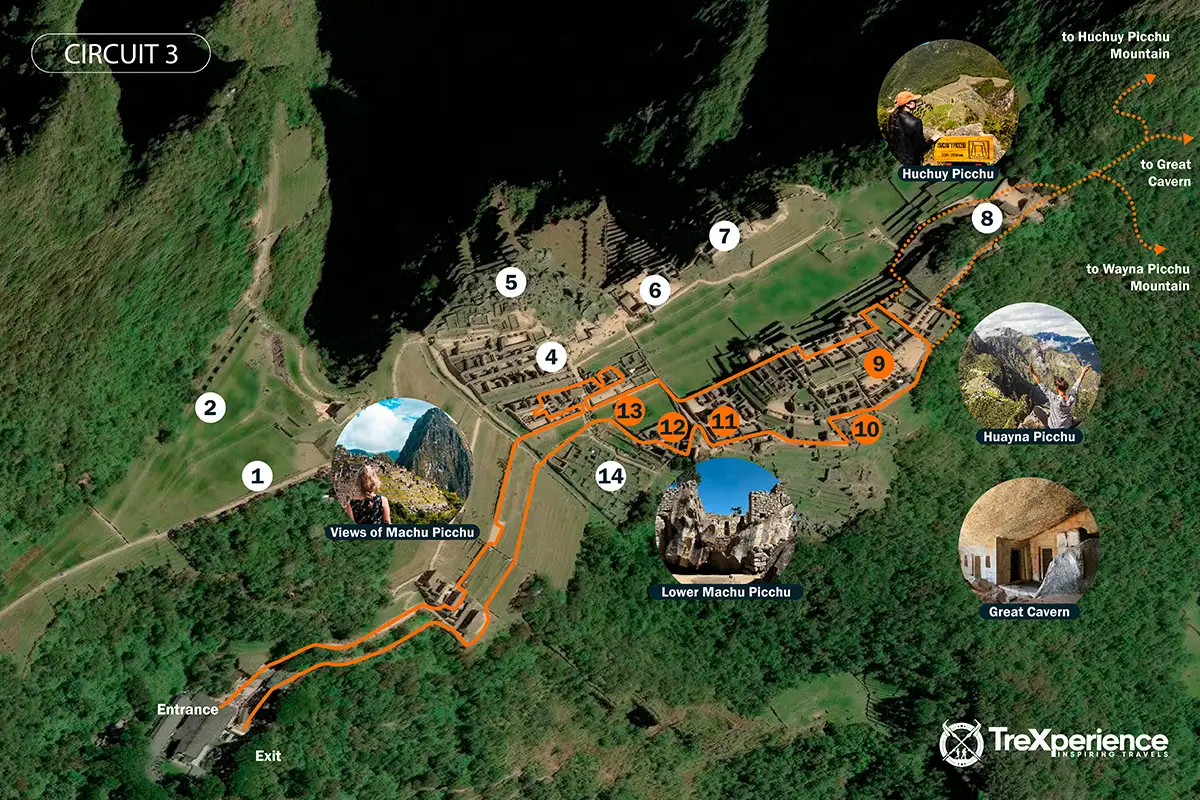
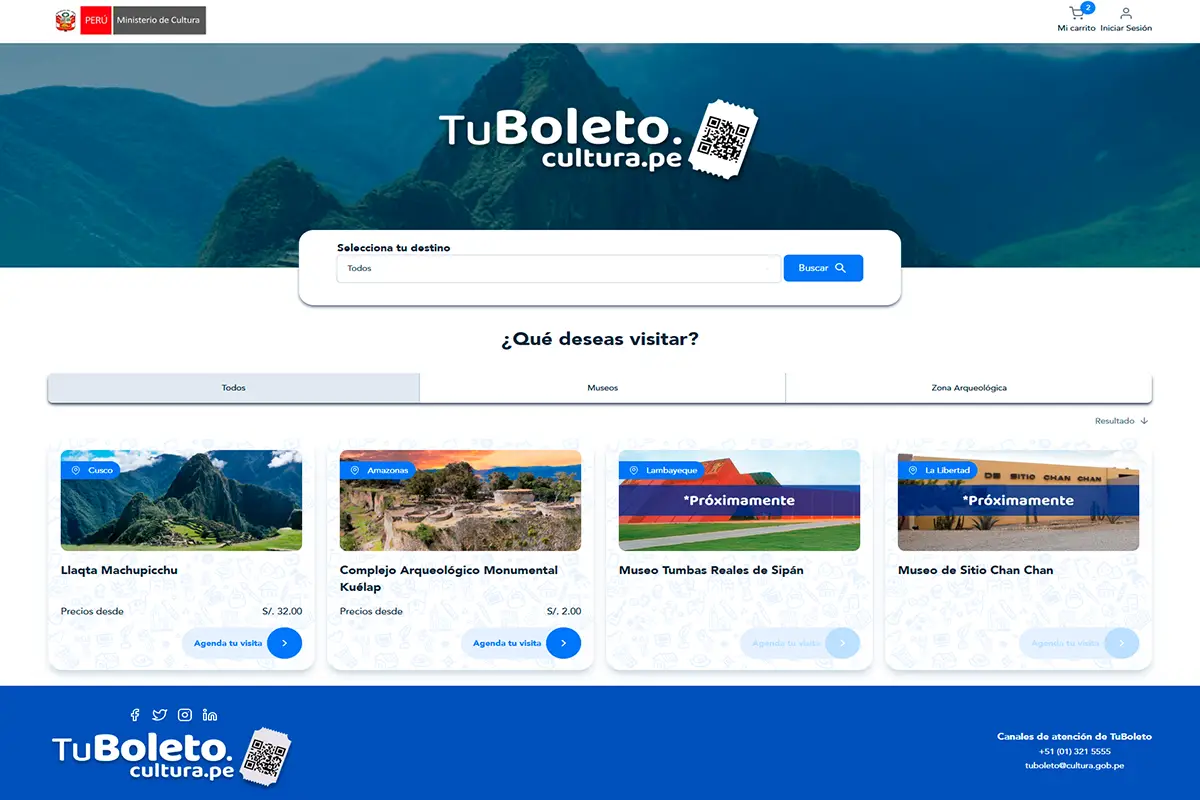

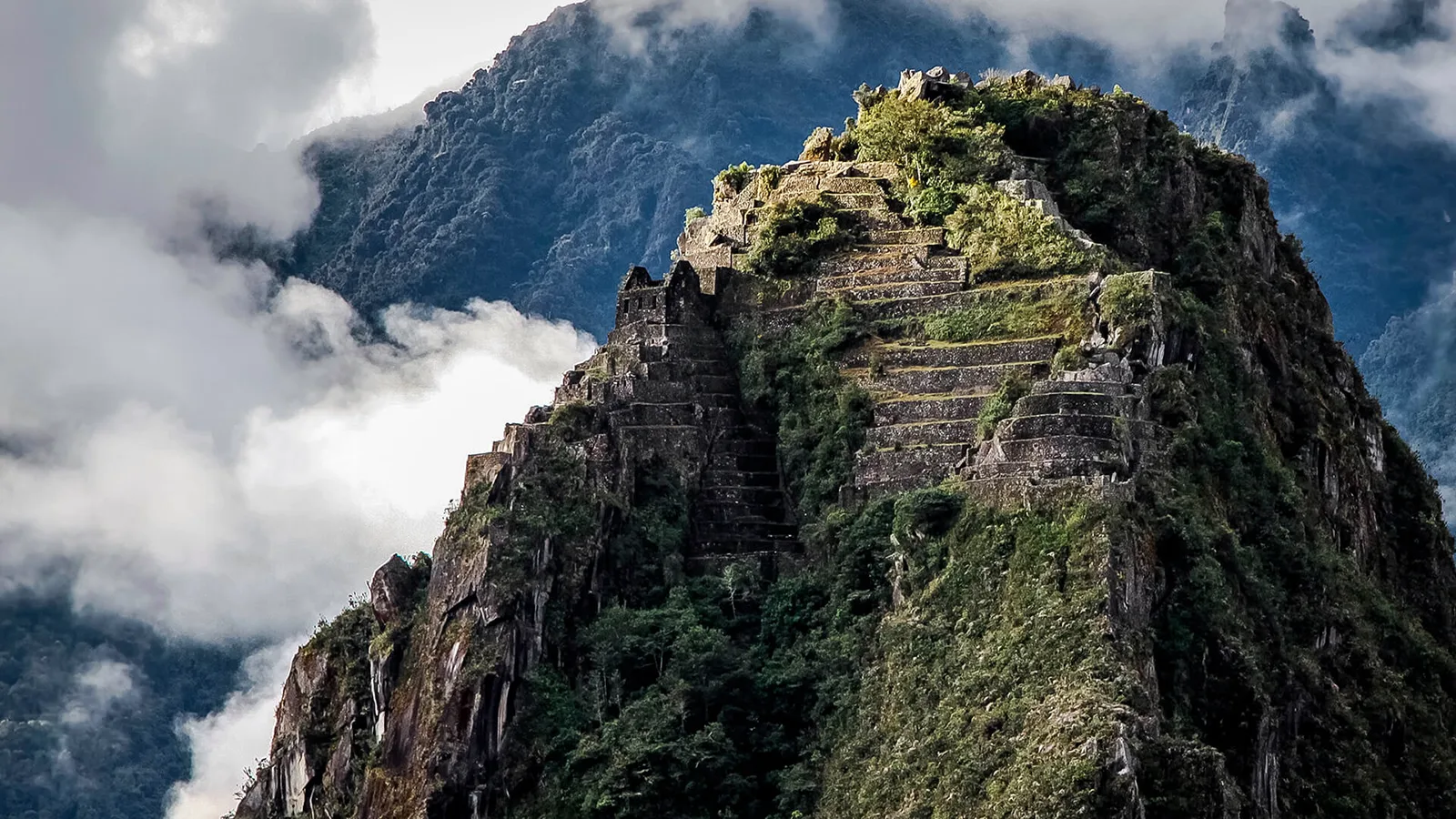
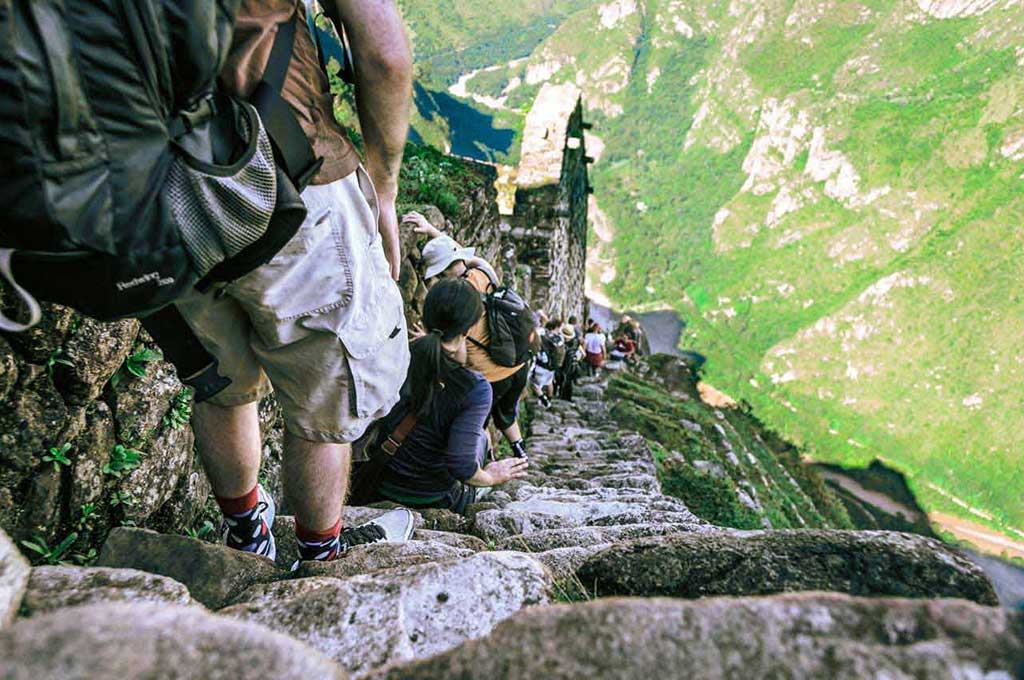

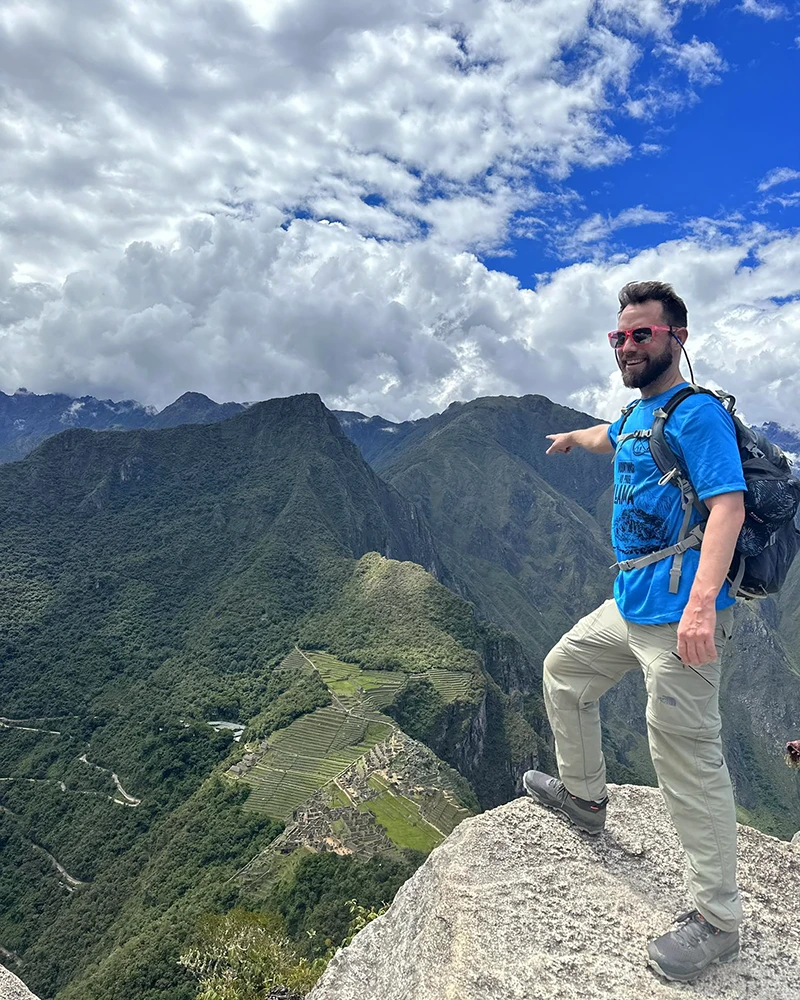

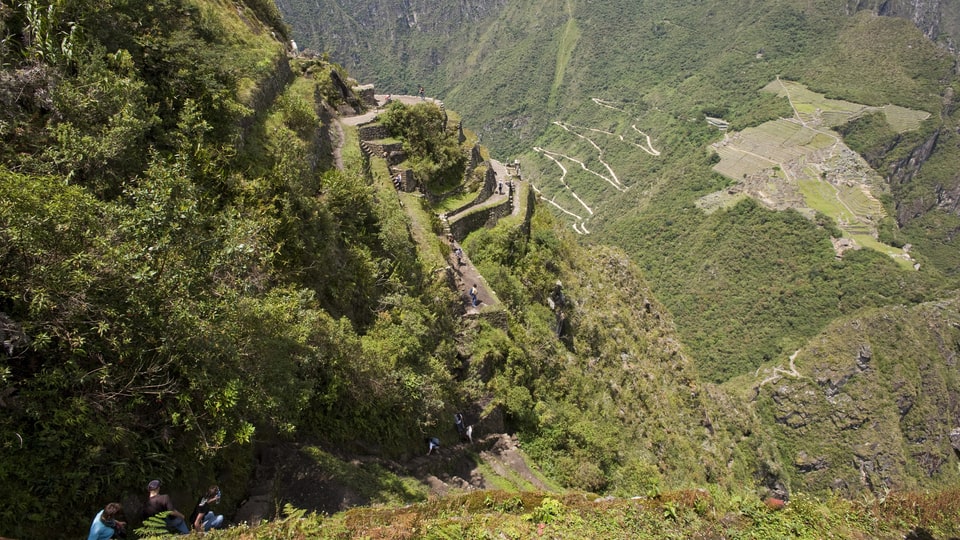

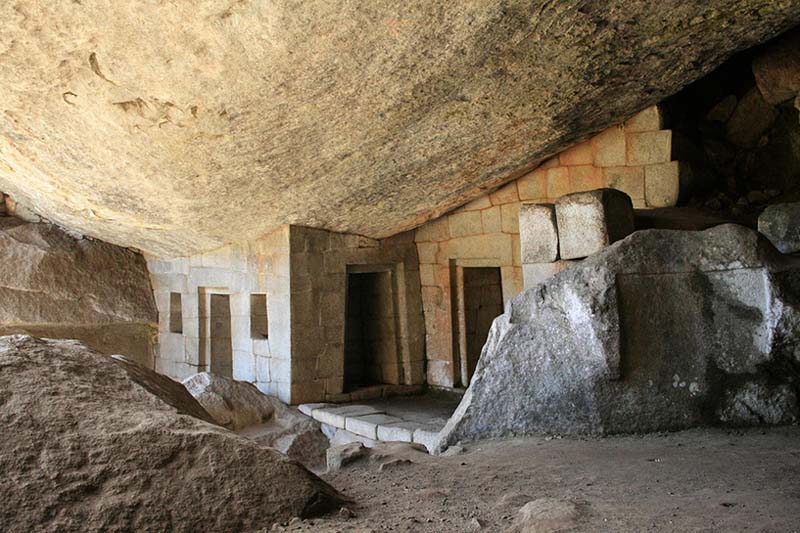

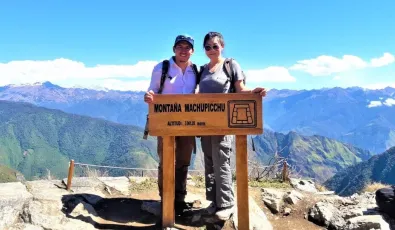
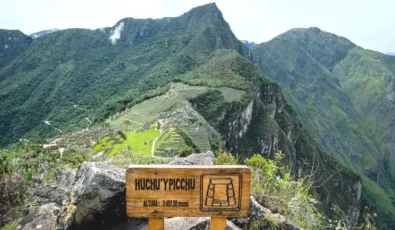
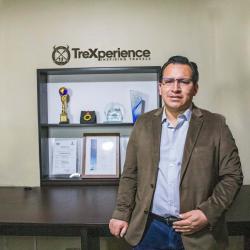
A must!
I've made this hike and the stairs are terryfing. Not a big issue if you climb slowly and bring good hiking shoes. The views at the end are absolutely worth it! I would just recommend to be on time, controlers can be really strict on site.
Add new comment